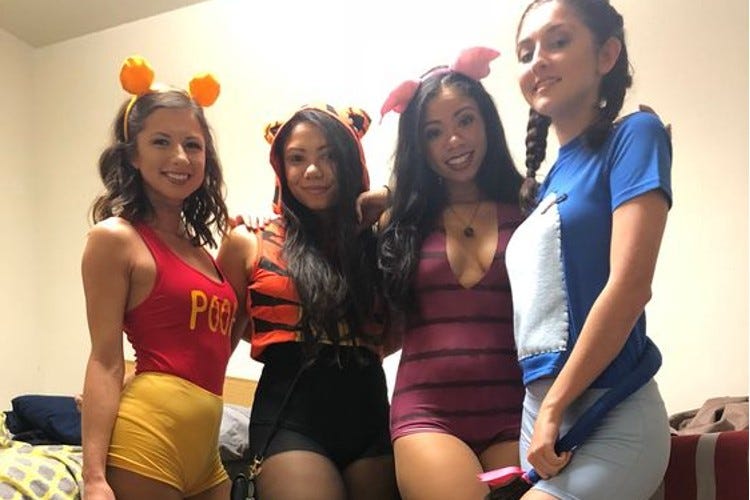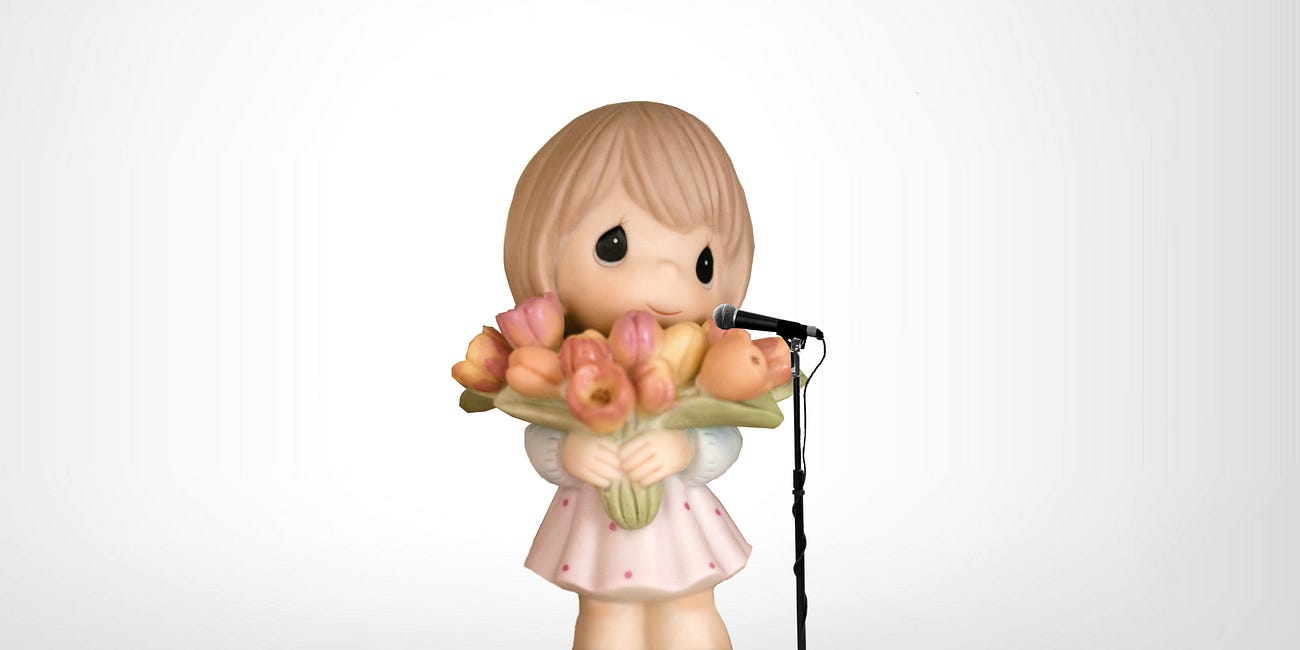What We Lost When We Lost the Freedom to Dress Like a Sexy Mario Brother on Halloween
Any why letting people get their freak on within reason matters

Dan Savage has called Halloween “Straight Pride Day”. He’s right, of course — it plays that role for adults. Holidays like Christmas and Independence Day — once excuses for debauchery — have morphed into cavalcades of wholesome family crap, which required Halloween to turn into an excuse to get dronk with an “o” and rut with a stranger in a public toilet. It’s odd that a day originally meant to honor Christian martyrs turned into an event where a guy dressed like Borat and a woman dressed like a sexy Lego bang each other by the dumpster behind the ESPN Zone, and yet: Here we are.
In recent years, Halloween costumes have become a battlefield in the culture war. It began when people started to question whether Halloween’s “edginess” might more accurately be called “racism”, or perhaps “social pressure for women to go downtown with their asscheeks hanging out even if it’s 40 degrees.” Then, there was a high-profile kerfuffle over student costumes at Yale, and conservative backlash to left-wing overreach, and now fighting over Halloween costumes is A Thing. And actually, it’s A Culture War Thing, which means that the issue has basically been place behind a velvet rope with a sign that says “You must lose 50 IQ points to participate in this discussion.”
No matter what you think the state of that discussion is, things have clearly changed. Gone are the days when a woman could throw on some lingerie and teddy bear ears, declare herself to be Thirst Trap Teddy Ruxpin, and wait for the good times to arrive. Any person with any semblance of a self-preservation instinct triple-checks their costume to make sure that no one could take offense. And to some extent, that’s a good thing. But there’s also a cost to overreach, and this article is about acknowledging that cost.
First, though, let’s acknowledge the good: It should be possible to have a stupid, horny fun time without demeaning anybody. I’m old enough to remember when some people found not-in-any-grey area racist costumes to be edgy and hilarious, which feels like saying “I remember when you could buy a phosphate at Woolworth’s for a nickel.” I also recognize that the pressure on women to wear a costume that looks like it was stolen from Cinemax’s wardrobe department in 1995 is a clear gender double standard; no guy has to worry that he’ll be considered a prude if he doesn’t show at least two inches of dong neck. As is often the case, societal change happened for a good reason.
And, as is also often the case, some people went too far. The aforementioned Yale case led to a professor being forced out after she wrote an email questioning whether Yale’s “watch it, kids” missive was the right approach, and her husband was excoriated in a viral video. There have also been attempts to apply today’s standards retroactively. The problem is that the cultural shift hasn’t lead to clear and widely agreed upon standards; it’s led to vague and seemingly contradictory1 rules that are often enforced by social media mobs. Which means that the rule isn’t really “don’t wear an offensive costume” — it’s “don’t wear a costume that might be considered offensive by anybody, up to and including the dumbest person on Earth.” Which has made people scared, and not in a fun, spooky, Halloween kind of way.
This is a small deal in the grand scheme of things. There are wars and famine and poverty in the world — who cares if Halloween is 20 percent less fun? But I do think this matters a bit. The left used to be associated with personal freedom — we were the “live and let live” folks who were okay if adults had sex and did drugs, especially if they did both together. We were pro gay rights and anti censorship, while the right were the uptight prudes preaching Calvinist self-denial while wearing heavy sweaters that functioned as a form of birth control. Today, the roles are somewhat reversed: The left are the scolds while right-leaning Podcast Bros have captured the libertine vibes. Halloween costumes are part of the vibe shift, and a part that ordinary folks encounter on a yearly basis.
We’re five days away from an enormously consequential election. Every partisan in the country is focused on undecided voters in Pennsylvania, who are: Kate, Brad, Michael S., Michael B., Devon, Sadie, and Julio. But we should also consider how people come to be “decided” in the first place. Many of us were undecided long ago, but various experiences led us to identify more with one party or the other. I think those experiences are usually not along the lines of “I read the Keynes/Hayek correspondences and sided more with Keynes”, but are typically more like “I missed out on a promotion and I think my race and gender played a role.” Regular life experiences shape our views, especially life experiences that involve a run-in with some total asshole. And that’s why I think that the left coming to be seen as the No Fun Brigade must surely be bad for Democrats when it comes time to vote.
I’ve written a lot lately about how we seem to have receded from peak wokeness. And a recent experience provided more evidence for that hypothesis: Last weekend, I was in the part of town where the youngs congregate (I was there to buy potting soil, because my life is basically a naked base jump into a live volcano every day). People were out partying for Halloween, and I’m happy to report: Ass has returned. I saw a sexy Black Poison Ivy, I saw a (presumably gay) guy dressed as a unicorn if unicorns wore little silver shorts — nature is healing. It should be possible to find ways to have inclusive and welcoming fun that also allows people to skank out to the max if they feel so inclined. We may still be finding the right balance, and I think the sooner we find it, the better.
Let me unpack that “seemingly contradictory”. We now live in a world in which most people agree that Santa Claus, Annie, storm troopers, or any number of other fictional characters don’t have to be white. I, for one, think this is good — it de-emphasizes race and removes boundaries about what fantasy scenarios people can enjoy. But then shouldn’t it also be okay for a white kid to dress as Mulan for Halloween? Even if the costume is just, you know…Mulan, the Disney character, and not “Chinese people, generally”. This is exactly the question that Erika Christakis got forced out of Yale for asking.







Let's not forget that phones are a big part of the problem. Before phones if someone dressed up like Sexy Hitler (like Sarah Silverman supposedly did once - which, BTW, hilarious), the people at the party could be both amused and horrified, but that's where it ended. There aren't 200 photos of the "offensive" costume all over the internet the following day. In a lot of ways, the ability to document everything has made many events more prudish simply because the "my mom & dad might find out" factor has gone through the roof.
"Dong neck."
At the end of the day, what this piece is all about -- what really makes it stylistically cohere as a fully-considered meditation on the evolving socio-cultural import of Halloween costumes -- is the phrase "dong neck."
I thank you for the advance in both scholarship and rhetoric.